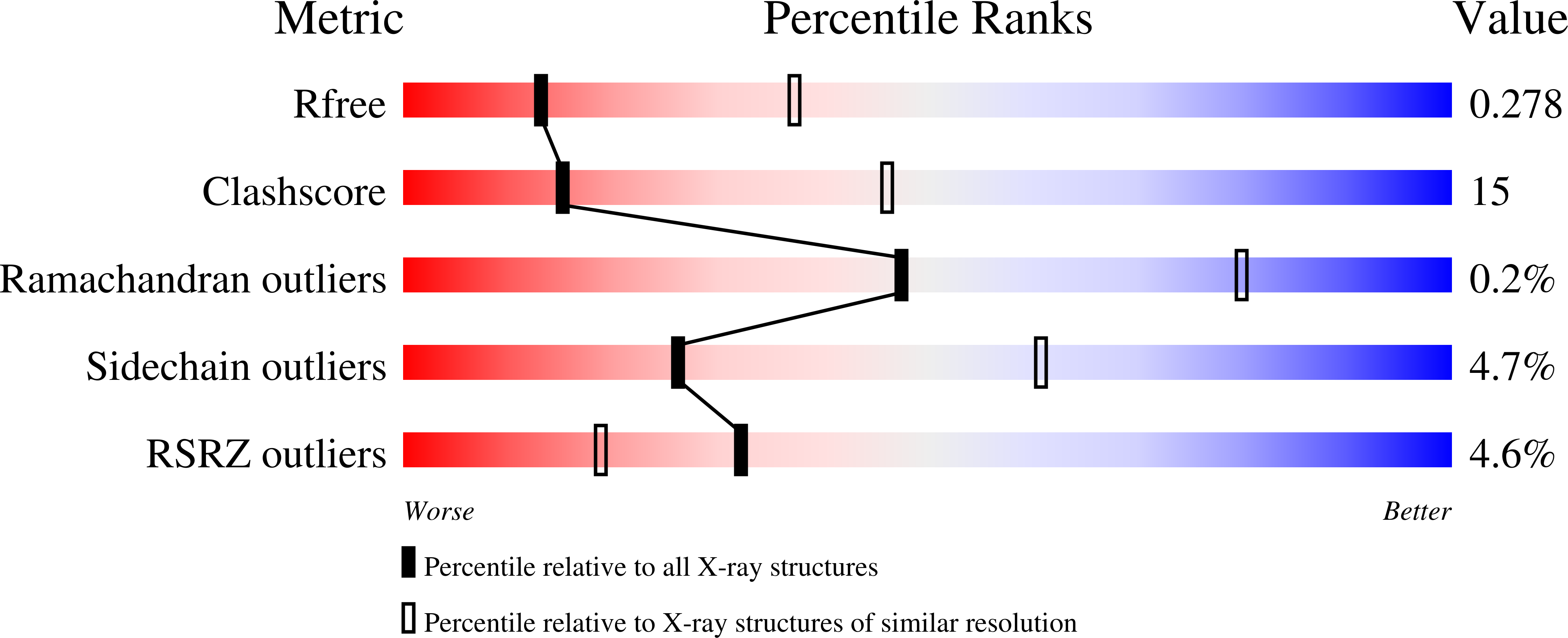
Deposition Date
2021-07-21
Release Date
2022-06-29
Last Version Date
2024-11-13
Entry Detail
PDB ID:
7P80
Keywords:
Title:
Crystal structure of ClpP from Bacillus subtilis in complex with ADEP2 (compressed state)
Biological Source:
Source Organism:
Bacillus subtilis (strain 168) (Taxon ID: 224308)
synthetic construct (Taxon ID: 32630)
synthetic construct (Taxon ID: 32630)
Host Organism:
Method Details:
Experimental Method:
Resolution:
2.98 Å
R-Value Free:
0.27
R-Value Work:
0.22
R-Value Observed:
0.23
Space Group:
C 1 2 1


